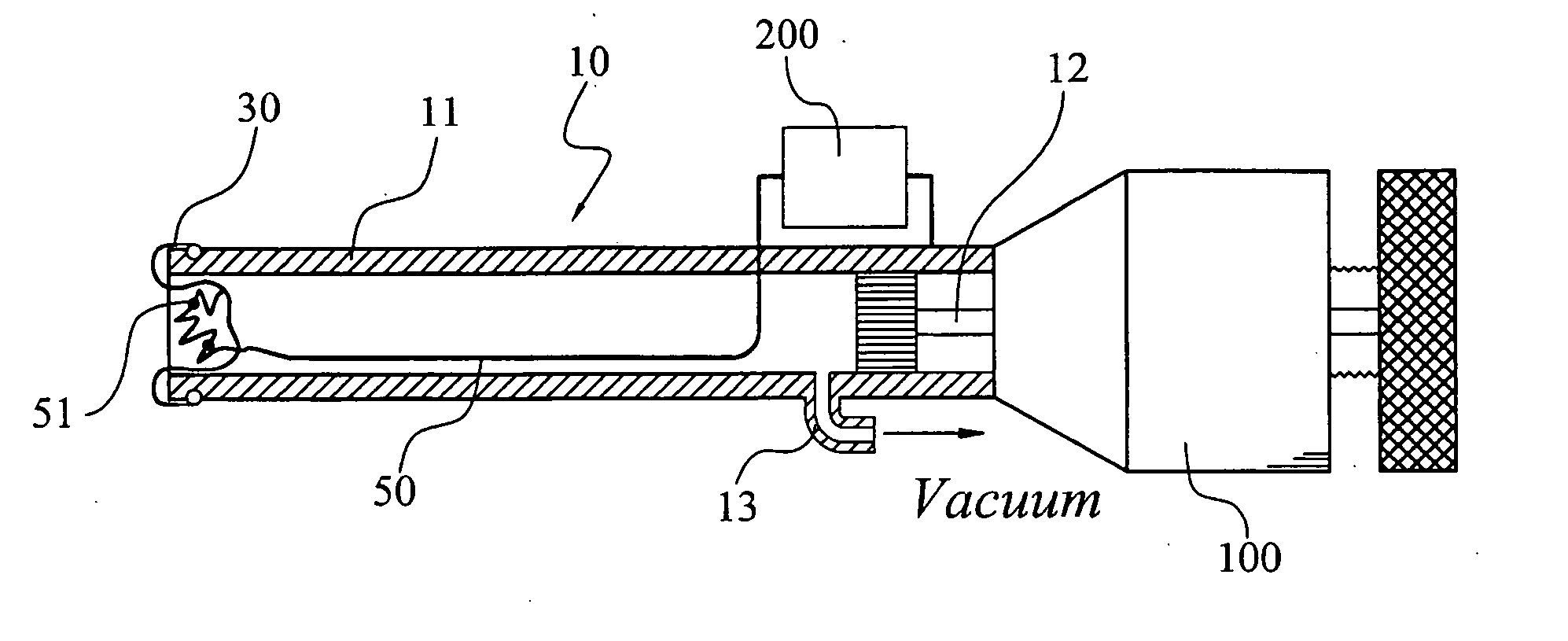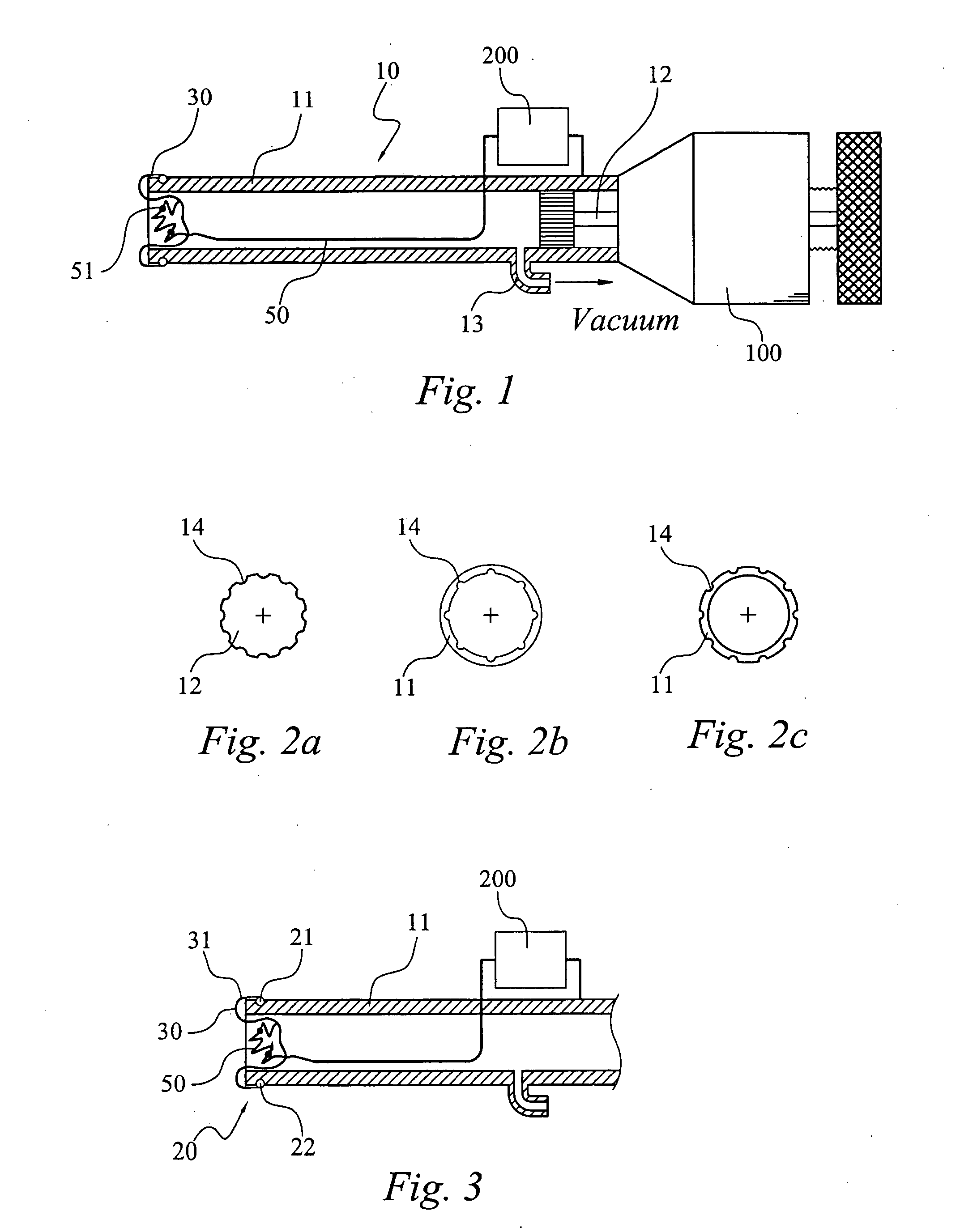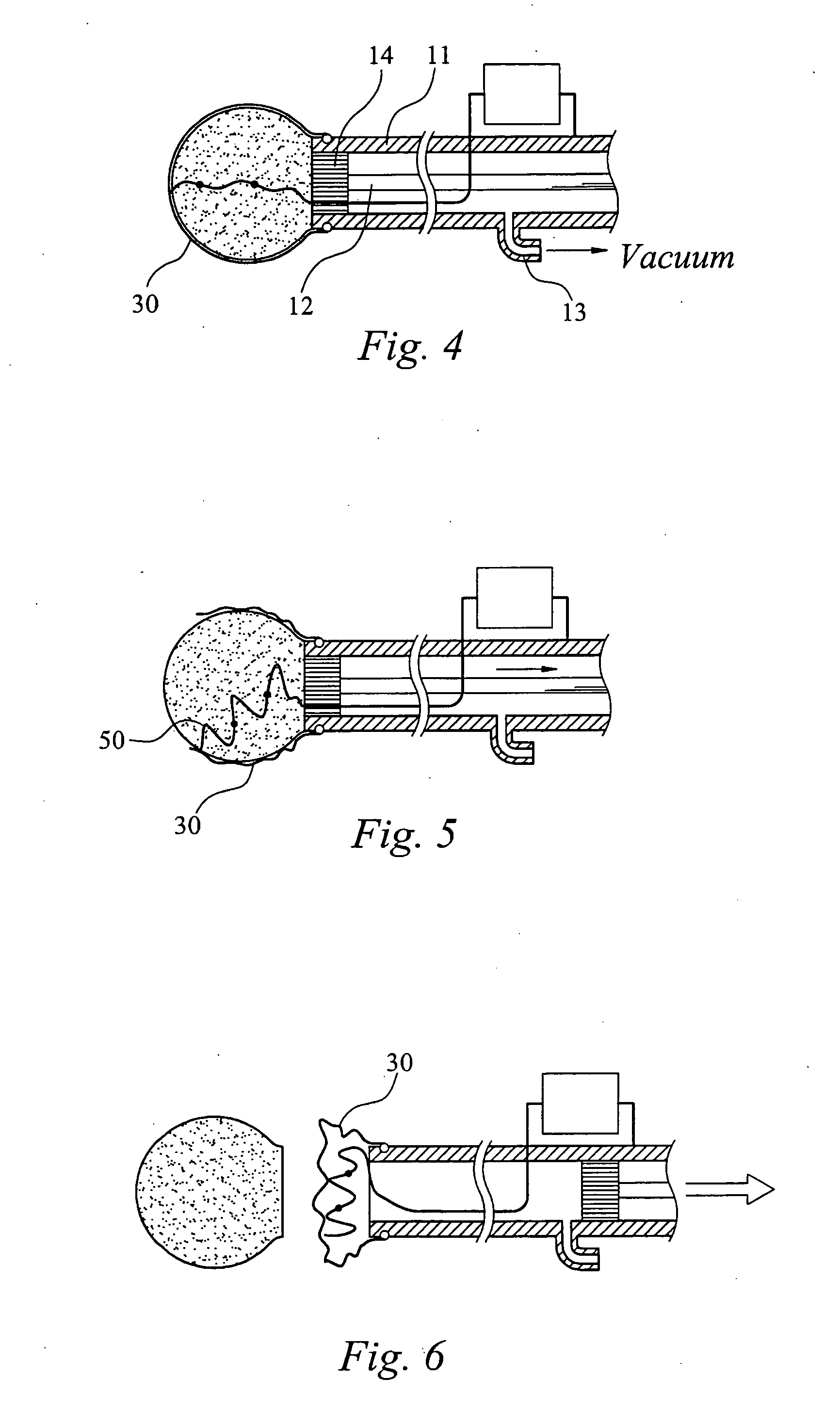Device for forming a hardened cement in a bone cavity
a technology of hardened cement and bone cavity, which is applied in the field of forming a set or hardened bone cement in the bone cavity, can solve the problems of increasing reducing the risk of cement dispersion/disintegration. , to achieve the effect of reducing the risk of cement dispersion/disintegration, reducing the risk of cement dispersion/
- Summary
- Abstract
- Description
- Claims
- Application Information
AI Technical Summary
Benefits of technology
Problems solved by technology
Method used
Image
Examples
Embodiment Construction
[0015]FIG. 1, FIGS. 3 to 6 are cross-sectional views of a device for forming a hardened cement in a bone cavity constructed according to a first preferred embodiment of the present invention, and together show a process flow diagram of the method of the present invention.
[0016]FIG. 2a is a lateral cross-sectional view of the plug 12 depicted in FIG. 1.
[0017]FIG. 2b is a lateral cross-sectional view of a tube 11 suitable for use in the device of the present invention, wherein grooves 14 are provided on an inside surface thereof.
[0018]FIG. 2c is a lateral cross-sectional view of a tube 11 suitable for use in the device of the present invention, wherein grooves 14 are provided on an outside surface thereof.
[0019] FIGS. 7 is a cross-sectional view of a device for forming a hardened cement in a bone cavity constructed according to a second preferred embodiment of the present invention, and together show a process flow diagram of the method of the present invention.
[0020]FIG. 8 is a ...
PUM
 Login to View More
Login to View More Abstract
Description
Claims
Application Information
 Login to View More
Login to View More - R&D
- Intellectual Property
- Life Sciences
- Materials
- Tech Scout
- Unparalleled Data Quality
- Higher Quality Content
- 60% Fewer Hallucinations
Browse by: Latest US Patents, China's latest patents, Technical Efficacy Thesaurus, Application Domain, Technology Topic, Popular Technical Reports.
© 2025 PatSnap. All rights reserved.Legal|Privacy policy|Modern Slavery Act Transparency Statement|Sitemap|About US| Contact US: help@patsnap.com



